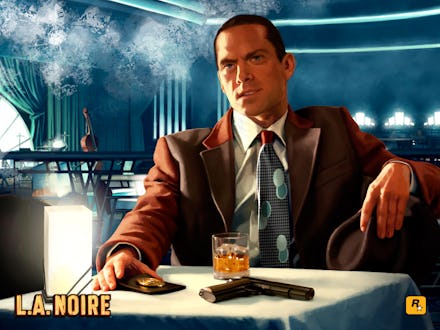The facial mo-cap in 'LA Noire' was way ahead of its time— but why doesn't anyone use it today?

L.A. Noire was a wildly ambitious Rockstar game — and not just because it's one of the few that didn't let you run over pedestrians all willy-nilly since you were a police detective and not a ne'erdowell. L.A. Noire was ambitious because it was a game that used an incredibly impressive and technically demanding MotionScan technology which it used for facial motion capture, developed by Australia's Team Bondi.
So why doesn't anyone use MotionScan anymore? There are a few reasons, but it mostly comes down to cost and implementation.
L.A. Noire MotionScan: The reasons why nobody uses it anymore
A recent article on Goomba Stomp went in-depth on MotionScan's various issues, and chief among them is the technology itself was prohibitively expensive. Each of the 32 MotionScan cameras required to make it work cost about $6,000 — costing around $192,000 — which probably didn't help the game's $50 million price tag. Additionally, recording that much information from a person's face led to some truly massive file sizes — about 1 GB of data per second of motion capture recorded.
Between the file sizes and the cost, it's not hard to see why MotionScan's implementations could be somewhat limited for studios under a certain budget or ones that don't want to ship their games on three or more discs.
To add to this, MotionScan took a lot of criticism for the physical constraints it placed upon the actors being mo-capped. According to Nolan North (the voice of Nathan Drake in Naughty Dog's Uncharted series), actors being recorded with the technology are unable to move while being recorded, since it messes with the capture. Richard Lemarchand, Uncharted 3's game designer, added that the physical constraints made it hard to interact with other actors, which makes getting good performances extra challenging.
Aaron Staton, the voice and mo-cap actor for L.A. Noire's protagonist Cole Phelps also said as much during an interview with GameSpot back in 2011:
It's literally just you in this room, and you've got 32 cameras, and you've got Brendan on the other end of the microphone. So, we would have dialogue back and forth, but there was no [other actor], and the cue was a beep or a shouted cue of "action." So, there wasn't the dialogue exchange, and for a game that's based on interrogations, so many of those cues are physical … as players will see playing the game. A lot of that was a challenge, sitting in the chair and sort of trying to imagine those cues; whereas on a set, be it film, TV, or on a stage, there would be an actor present to give you that cue.
The constraints and stress put on the actors during their performances during L.A. Noire's MotionScan sessions were a glaring concern within SAG. The issues with L.A. Noire certainly weren't singular, but they helped contribute to a wider problem for voice actors working on games.
While the interactive limitations are probably not as noticeable in a game like L.A. Noire that was based around one-on-one interrogation and evidence collection, it's not hard to see the challenges this would present for a game less focused on identifying whether suspects were lying based on their facial movements.
Although the facial animations in L.A. Noire still look uncannily good despite the somewhat dated graphics, it's pretty clear that MotionScan was much too prohibitive in terms of its cost and the inhibitors it placed on the actors who used it to ever really see a widespread use. It was a novel idea, and who knows what the future will hold for motion capture, but chances are good it won't have come as a result of Team Bondi's ambitious but ultimately ill-fated MotionScan technology.
More gaming news and updates
Check out the latest from Mic, including our deep dive into how female Overwatch players are dealing with online harassment, an article about a fan movement advocating for more same-sex romance options in Mass Effect, a personal essay to JonTron from another Iranian-American and an article looking at cultural diversity in Overwatch.